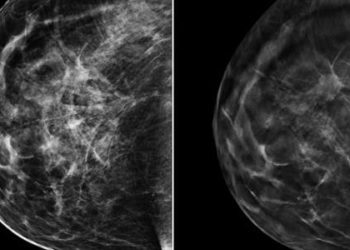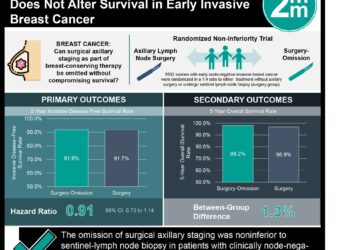2 Minute Medicine Rewind February 29, 2016
Azole antifungals are used to treat a variety of fungal infections. These medications can, in some cases, cause acute liver injury. This study aimed to look at the incidence rates of acute liver injury secondary to therapy with the different azole medications and whether chronic liver disease was a risk factor for that result. A cohort study was conducted from 2004-2010 in Northern California. It looked for incidence rates of liver aminotransferases above 200 U/L, severe acute liver injury, and acute liver failure within a population of 195,334 patients who had been prescribed azoles. For an acute increase in liver aminotransferases, fluconazole (13, 95% CI 11.4 to 19.6), ketoconazole (19.3, 95% CI 13.8 to 26.3), and itraconazole (24.5, 95% CI 10.6 to 48.2) all had low incidence rates, given here in events/1000 person-years. However, posiconazole (191.1, 95% CI 23.1 to 690.4) and voriconazole (181.9, 95% CI 112.6 to 278.0) had higher incidence rates, also given in events/1000 person years. Similar results were presented for severe acute liver injury, with voriconazole (16.7, 95% CI 2.0 to 60.2) and posiconazole (93.4, 95% CI 2.4-520.6) again having the highest incidence rates, while the incidence rates for ketoconazole, itraconazole, and fluconazole were all below 3 events/1000 person-years. One patient developed acute liver failure in this study and that patient was prescribed ketoconazole. A Cox regression showed that chronic liver disease increased risk of elevated aminotransferase levels with a hazard ratio of 4.68 (95% CI, 3.68 to 5.94) and severe acute liver injury with a hazard ratio of 5.62 (95% CI, 2.56 to 12.35). In conclusion, posiconazole and voriconazole did show increased risk of acute liver injury. However, fluconazone, ketoconazole, and posiconazole had low incidences of these problems. Also, this study showed that chronic liver disease that pre-existed the azole prescription was a risk factor for these types of events.
Stopping vs. Continuing Aspirin before Coronary Artery Surgery
Aspirin has been known to increase the risk of serious bleeding during surgery. However, it is commonly used to prevent myocardial infarction, stroke, and death in patients with coronary artery disease (CAD). This study sought to examine whether or not patients with CAD should continue to take aspirin leading up to coronary artery surgery. 2,100 patients scheduled to undergo this type of surgery and at increased risk for major complications were randomly assigned to receive either aspirin 100mg or placebo. Myocardial infarction, stroke, renal failure, bowel infarction, pulmonary embolism, and death were considered the primary outcome if they occurred within 30 days after surgery. 19.3% of patients taking aspirin had a primary outcome, compared to 20.4% of patients taking the placebo. This resulted in a relative risk of 0.94 (95% CI, 0.8 to 1.12; P=0.55). Additionally, 1.8% of patients assigned to the aspirin group had major hemorrhage during the surgery while 2.1% of the placebo group had that occur (P=0.75). As a result, it was concluded that continuing to take aspirin leading up to a coronary artery surgery does not lower the risk for thrombotic complications but also did not increase risk of major bleeding.
A gap in knowledge currently exists for Acute Respiratory Distress Syndrome (ARDS). This prospective cohort study was conducted by sampling from 459 ICUs in 50 countries during a four week period in February and March of 2014 to examine the care and treatment of ARDS in the intensive care unit. 3,022 patients undergoing invasive or noninvasive ventilation met the criteria for ARDS based on the Berlin ARDS Definition. ARDS was present in 10.4% (95% CI, 10 to 10.7) of ICU patients and 23.4% (95% CI, 21.7 to 25.2) of patients requiring mechanical ventilation, though these rates varied from continent to continent. The diagnosis of ARDS was often delayed, with only 34% (95% CI, 32 to 36) of clinician recognizing and diagnosing at the time of onset. The diagnosis of ARDS was made for 51.3% (95% CI, 47.5% to 55.0%) of mild cases and 78.5% (95% CI, 74.8% to 81.8%) of cases that were considered more severe. Factors like the presence of cardiac failure or lack of risk factors were associated with less diagnosis. Additionally, 82.6% (95% CI, 81.0% to 84.1%) of patients received a positive end expiratory pressure of less than 12 cm H2O, despite higher positive end expiratory pressure being used as an intervention for ARDS. Concordantly, 35.1% (95% CI, 33.1% to 37.1%) of patients were given a tidal volume of more than 8 mL/kg per body weight, despite low tidal volumes also being used as an intervention. Mortality rates of these patients in the hospital were 34.9% (95% CI, 31.4% to 38.5%) for patients with mild ARDS, 40.3% (95% CI, 37.4% to 43.3%) for moderate ARDS, and 46.1% (95% CI, 41.9% to 50.4%) for patients with a severe case. These results indicate a potential for improvement in the medical care of ARDS, as it was underdiagnosed and undertreated.
Effect of Allopurinol on Cardiovascular Outcomes in Hyperuricemic Patients: A Cohort Study
Hyperuricemia, along with gout, are considered risk factors for cardiovascular disease. This study aimed to look at the effects of allopurinol, a urate lowering therapy, on cardiovascular outcomes, as well as all-cause mortality. A cohort of allopurinol-using, hyperuricemic patients (defined as urate measurements ≥ 6 mg/dL) was selected from one county in Denmark and matched 1 to 1 via propensity scores to a group of similar patients not using allopurinol, but still hyperuricemic. Data was gathered for inpatient and outpatient facility visits, as well as any blood samples, filled prescriptions, and causes of death. A risk regression model was completed for the two cohorts in terms of myocardial infarction, stroke, cardiovascular death, and all-cause mortality. From 1992 to 2010, 7,127 patients were found to be on allopurinol. The cohort of those taking allopurinol were shown to have a hazard ratio of 0.89 (95% CI, 0.81 to 0.97) for the cardiovascular outcomes, while also having a 0.68 hazard ratio for all-cause mortality (95% CI, 0.62 to 0.74). In conclusion, cardiovascular risk is lowered with allopurinol treatment. However, the investigators acknowledge the need for this to be confirmed in a randomized control trial.
Mammography utilizes ionizing radiation. This can, in turn, induce breast cancer in patients. This study sought to look at incidence of radiation-induced breast cancer and mortality associated with digital mammography while taking into account dose variation and radiation obtained from diagnostic and screening mammography. Two stochastic models were used to evaluate eight screening strategies, one model that simulated individual life histories of women with and without breast cancer and another that simulated radiation exposure. The strategies that were analyzed were: screening every year from age 40-74, 45-74, or 50-74, screening other year in those same three age ranges, or annual screening from 40 to 49 or 45 to 49 followed by screening every two years until age 74. The models showed that women with large breasts receive 2.3 times as much radiation as those with smaller or average-sized breasts due to the requirement for extra views during a mammography. The models resulted in a predicted average of 125 breast cancer cases per 100,000 women (95% CI, 88 to 178). With further use of the models, the investigators were calculate breast cancer deaths averted per radiation-induced case of breast cancer: with screening every other year from age 50 to 74, a value of 23 (95% CI, 16 to 33) was calculated; with screening every year from 40 to 74, a value of 8 (95% CI, 5 to 11) was demonstrated; for annual screening of women with large breasts from age 40 to 74, that value was 4 (95% CI, 3 to 5). It was concluded that women with larger breasts have higher risk for radiation-induced breast cancer. In addition, radiation dose, screening frequency, age of earliest screening, and other diagnostic work-up play a role in incidence and mortality of radiation-induced breast cancer.
Image: PD
©2016 2 Minute Medicine, Inc. All rights reserved. No works may be reproduced without expressed written consent from 2 Minute Medicine, Inc. Inquire about licensing here. No article should be construed as medical advice and is not intended as such by the authors or by 2 Minute Medicine, Inc.







